Northeast
Meet the American who was the 'working man' Founding Father, Irish ironsmith George Taylor
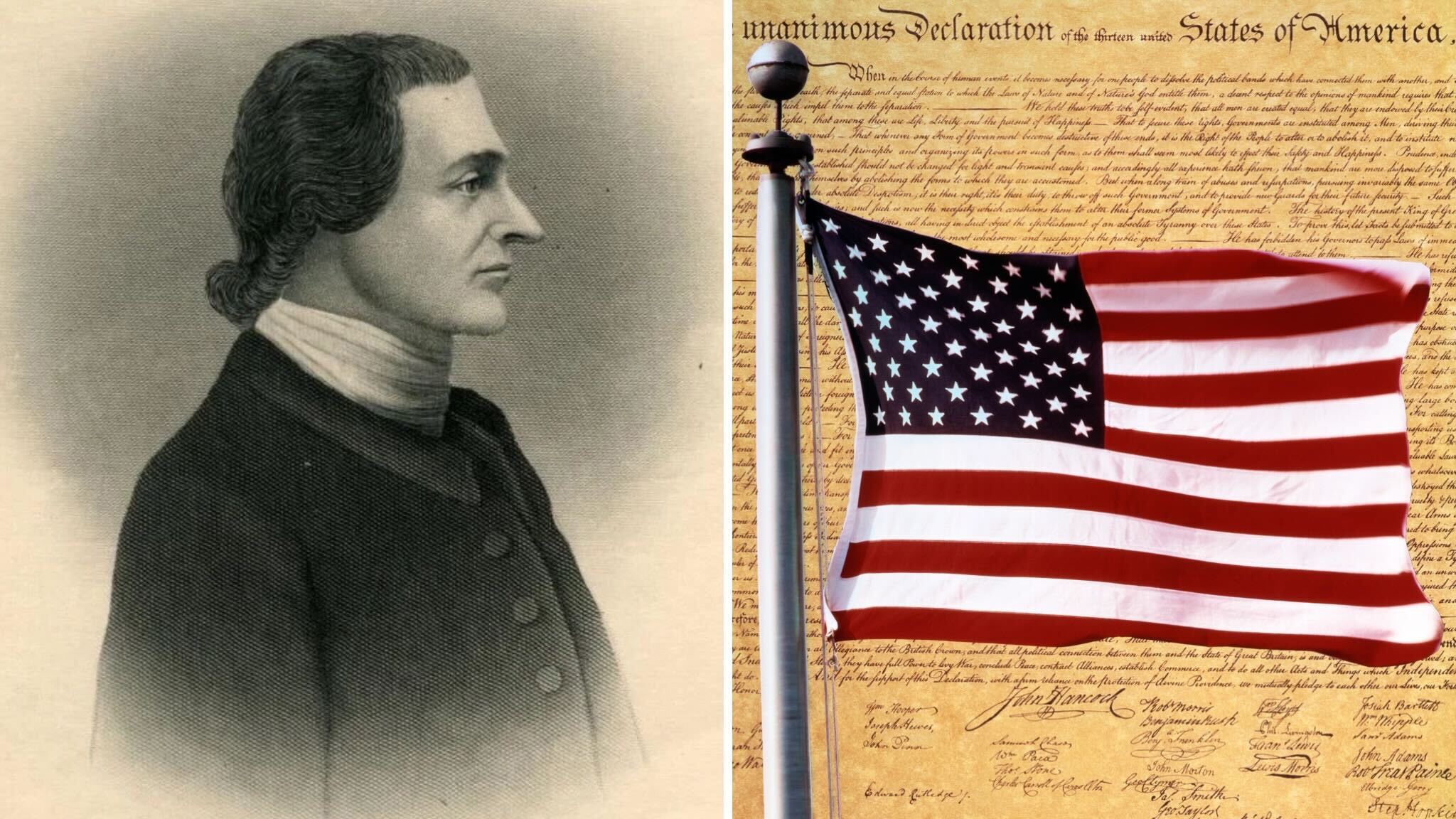
George Taylor was the Founding Father who earned his keep in America by sweating over hot coals.
He arrived in Pennsylvania from Ireland in 1736, an indentured servant to an iron foundry owner who paid for his passage to America.
He shoveled coal into a blast furnace, melting the abundant ore of the Lehigh Valley into pig, wrought and cast iron – later into musket and cannon shot, an arsenal of independence.
“Hard, dirty work,” said historian and author Tim Betz, curator of exhibitions at the Northampton County Historical and Genealogical Society in Easton, Pennsylvania.
MEET THE AMERICAN WHO MENDED DEFECTIVE INFANT HEARTS, VIVIEN THOMAS, HIGH-SCHOOL EDUCATED CARDIAC SURGEON
Taylor rose to become a wealthy foundry owner himself. In 1776, he joined a short list of just 56 men who propelled humanity out of darkness when he inked his name upon the Declaration of Independence.
Three of those men — Taylor, James Smith and Matthew Thornton — were born in Ireland, according to the National Archives.
George Taylor (1716-1781), circa 1765. A continental politician born in Ireland, he came to the American colonies in 1736 and became a member of the Pennsylvania provincial assembly and a signer of the Declaration of Independence. (Hulton Archive/Getty Images)
The Irish are the most represented people, other than those born in America, on the daring but triumphant call for a new world order.
Eminent historian Joseph Ellis, himself of Irish descent, told Fox News Digital that Ireland’s imprint on the foundational document of the United States is no surprise.
“The Irish were already committed to American independence.”
“The Irish already had hatred for Britain and King George III,” said Ellis, who wrote the Pulitzer Prize-winning historical account, “Founding Brothers,” among other books.
“Their own country had been overtaken and destroyed by the British. They didn’t have to read Thomas Paine’s ‘Common Sense.’ The Irish were already committed to American independence.”
Arrived in America ‘destitute’
George Taylor was born around 1716, most likely in the province of Ulster, in what is now Northern Ireland. Some accounts say he was born in Dublin, now the capital of the Republic of Ireland.
“He was the son of a responsible clergyman,” the Rev. Charles A. Goodrich wrote in an 1840 tome, “The Signers to the Declaration of Independence.”

View of the City of Philadelphia in the 18th century. Artist: George Heap (1714–1752). (Sepia Times/Universal Images Group via Getty Images)
Taylor planned to study medicine, Goodrich writes, but instead arrived in America “destitute.”
He went to work for Samuel Savage Jr., who owned the Durham iron works on the Delaware River, near Easton, and who paid for Taylor’s journey to America. The Irishman, like other newcomers of the era, was an indentured servant.
“Exploitative labor,” said historian Betz.
MEET THE AMERICAN WHO ROWED WASHINGTON ACROSS THE DELAWARE ON CHRISTMAS: SAILOR-SOLDIER JOHN GLOVER
Taylor began at the bottom, fueling fires hot enough to melt iron.
“He worked his way up from furnace filler, to clerk, and then manager as the owner became aware of his education and aptitudes,” writes the Durham Historical Society.
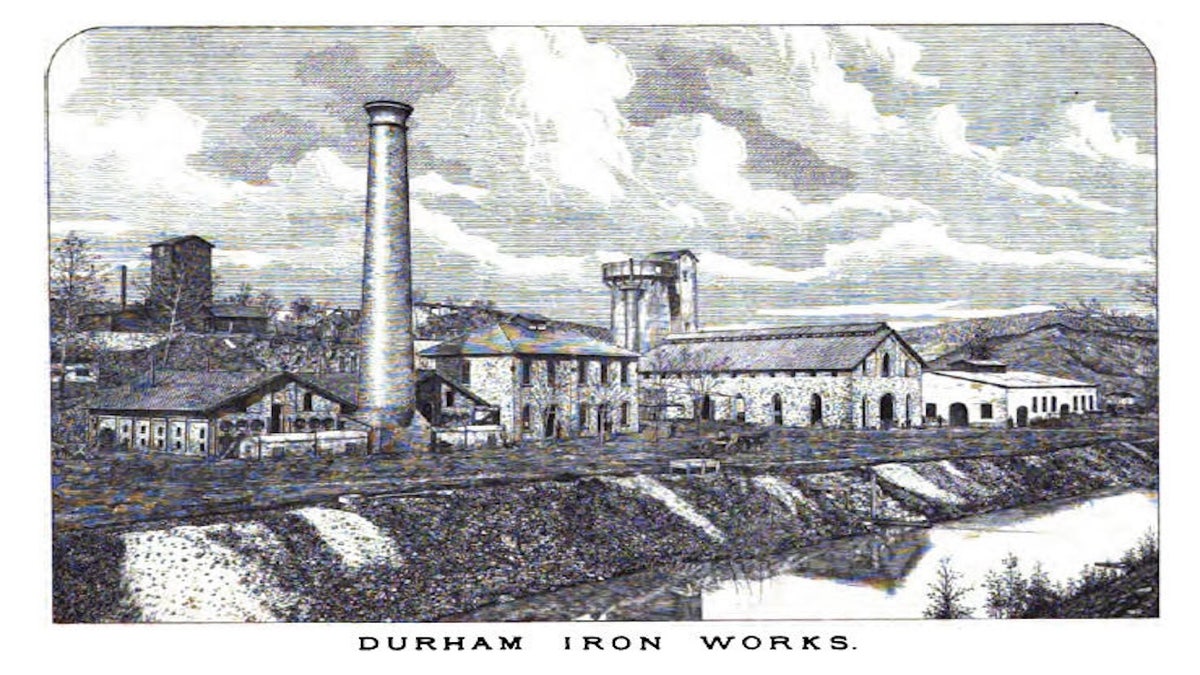
Durham Iron Works, where Taylor oversaw production of cannon shot and shells for the Continental Army. (“History of Bucks County, Pennsylvania,” William Watts Hunt Davis, 1876, Public Domain)
Taylor’s aptitudes apparently caught the attention of another Savage: the owner’s wife.
Samuel Savage died in 1742. Taylor married his widow, Ann, in 1743.
The circumstances of their relationship are unknown, said Betz.
Goodrich writes only, “Upon the death of Mr. Savage, [Taylor] became connected in marriage with his widow.”
“He worked his way up from furnace filler, to clerk, then manager as the owner became aware of his education and aptitudes.”
One circumstance is known. “In a few years the fortune of Mr. Taylor was considerably farther increased.”
The indentured servant who shoveled coal spent much of his time running the business of ironmaking.

The Pennsylvania Regiment, 1760. Corporal. One of a collection of 12 watercolors of American Colonial militia uniforms, 1756-1761. Figure in blue, orange and white with rifle facing right. Artist Herbert Knotel, 1949. (Pierce Archive LLC/Buyenlarge via Getty Images)
He also served as a captain in the Pennsylvania militia, and became a vocal member of both the Pennsylvania assembly and its Committee of Correspondence.
Those same colonial committees eventually served as a shadow government that pushed the American colonies toward independence from Britain.
His ‘sacred honor’
The Founding Fathers are widely portrayed as triumphantly signing the Declaration of Independence on July 4, 1776 — Independence Day in America.
The reality is quite convoluted and procedural. Most notably, “nothing really happened on July 4th,” said Ellis.
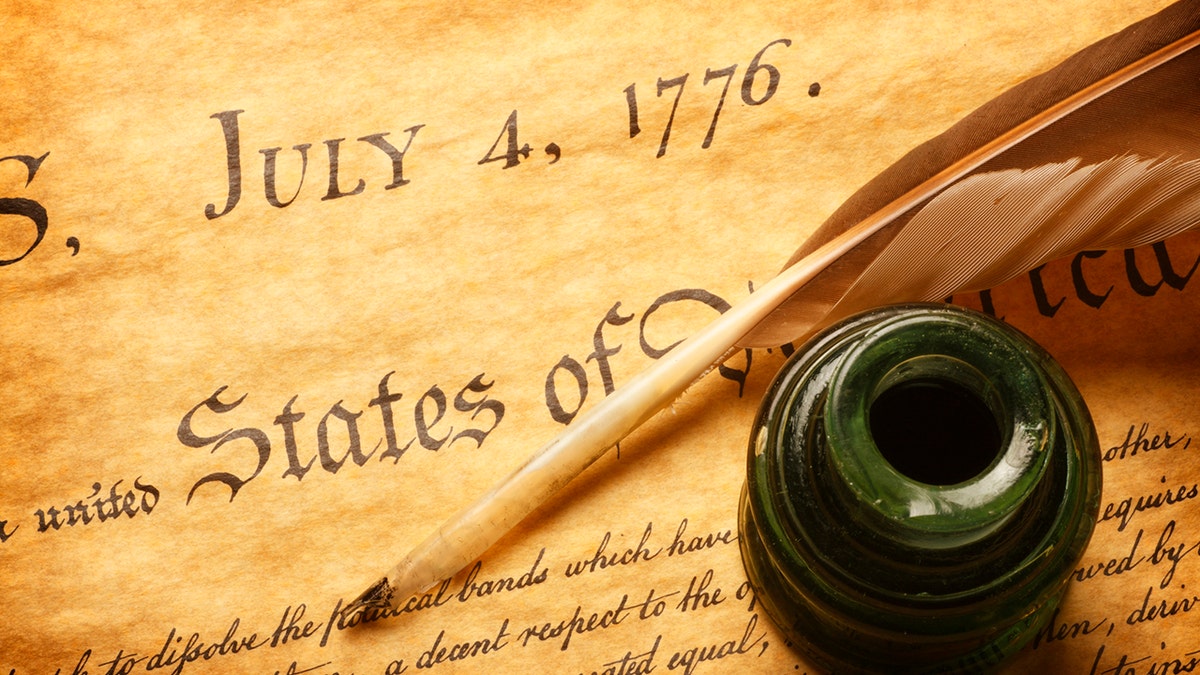
A feather quill and inkwell sitting on top of the American Declaration of Independence. The quill and inkwell sit next to the scribing of one of the most famous dates in world history, July 4, 1776. (iStock)
The Second Continental Congress voted for independence two days earlier. Twelve of the 13 colonies voted in favor; New York abstained.
“The Second Day of July 1776, will be the most memorable Epocha, in the History of America,” John Adams wrote to his wife Abigail in Massachusetts the following day.
MEET THE AMERICAN WHO LED 77 MINUTEMEN AGAINST 700 REDCOATS AT BATTLE OF LEXINGTON: CAPTAIN JOHN PARKER
“I am apt to believe that it will be celebrated, by succeeding Generations, as the great anniversary Festival.”
Congress approved the language and sent it to the printer two days later. Splashed in bold across the top of the document was this: “In Congress, July 4, 1776.”
The Declaration of Independence that we picture today, headlined by the dramatic signature of John Hancock, was not signed until Aug. 2.
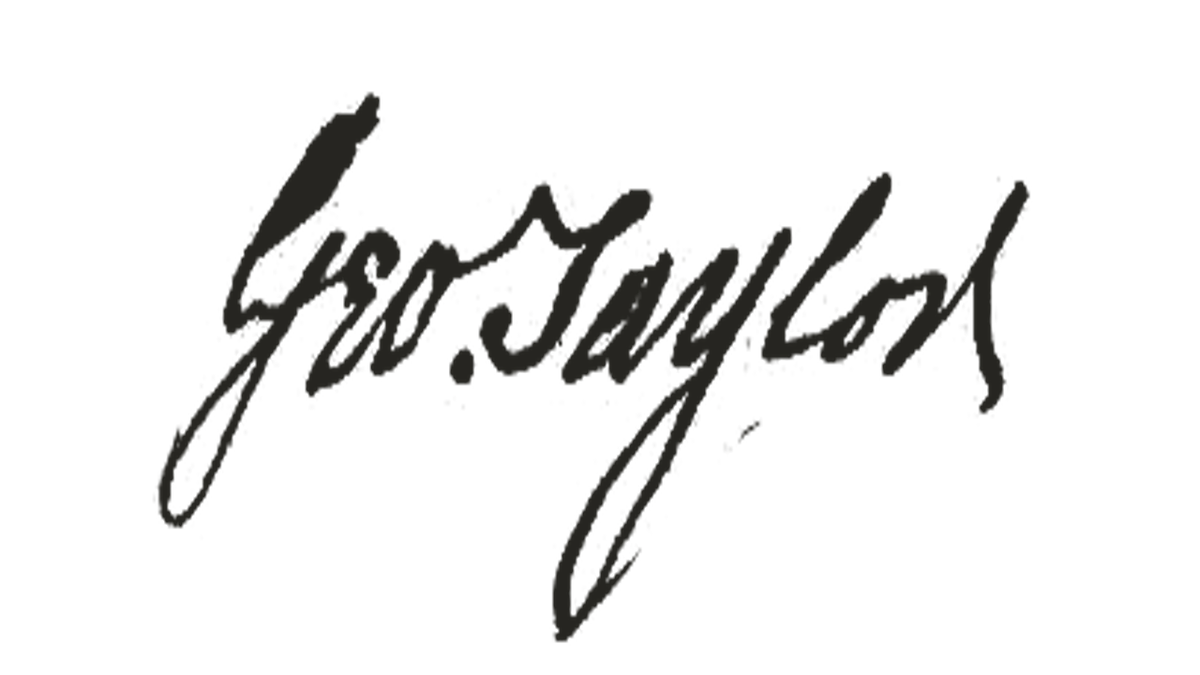
George Taylor’s signature, as featured on the Declaration of Independence. (Descendants of the Signers of the Declaration of Independence (DSDI))
It was the moment of truth, the day the revolutionaries publicly declared their opposition to King George — and, in the eyes of the crown, declared themselves traitors to suffer death by hanging.
“We mutually pledge to each other our Lives, our Fortunes and our sacred Honor,” reads the last sentence of the most influential and politically radical document in human history.
“We mutually pledge to each other our Lives, our Fortunes and our sacred Honor.”
John Hancock added his oversized splash of ink below those words first; 49 of 56 signatories followed, Taylor among them. The remaining six followed at later dates.
“I would say that of all the people who are in that room,” said Betz, “he was the one we might say was a regular guy. Just a working guy.”
The working man Taylor’s labor in support of the American Revolution was not over.
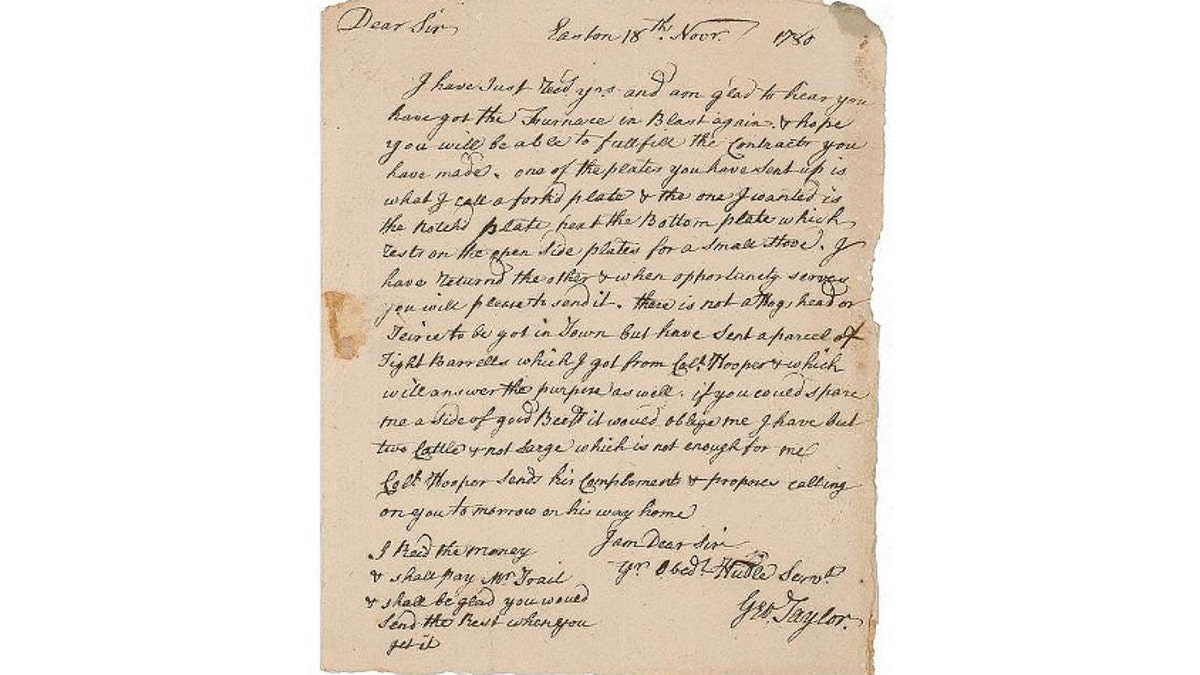
George Taylor discussed the iron forge business in a 1780 letter while the American Revolution was still being fought. Taylor arrived in America as an indentured servant from Ireland in 1736, later signing the Declaration of Independence in 1776. (Paul Frasier/Paul Frasier Collectibles)
“Taylor transformed the ironworks into a munitions factory for the Continental Army. Durham produced cannon, cannonballs, shot, and other military equipment, probably at a financial loss,” writes ExploreHistoryPA.com.
“Taylor’s commitment to an independent United States took precedence over financial gain.”
A ‘promise for future generations’
George Taylor died on Feb. 23, 1781 in Easton, around age 65.
He had been stricken with illness in 1777 and ended his public service, according to the Pennsylvania Center for the Book.
He’s buried at Easton Cemetery, beneath a monument erected in his honor in 1854.
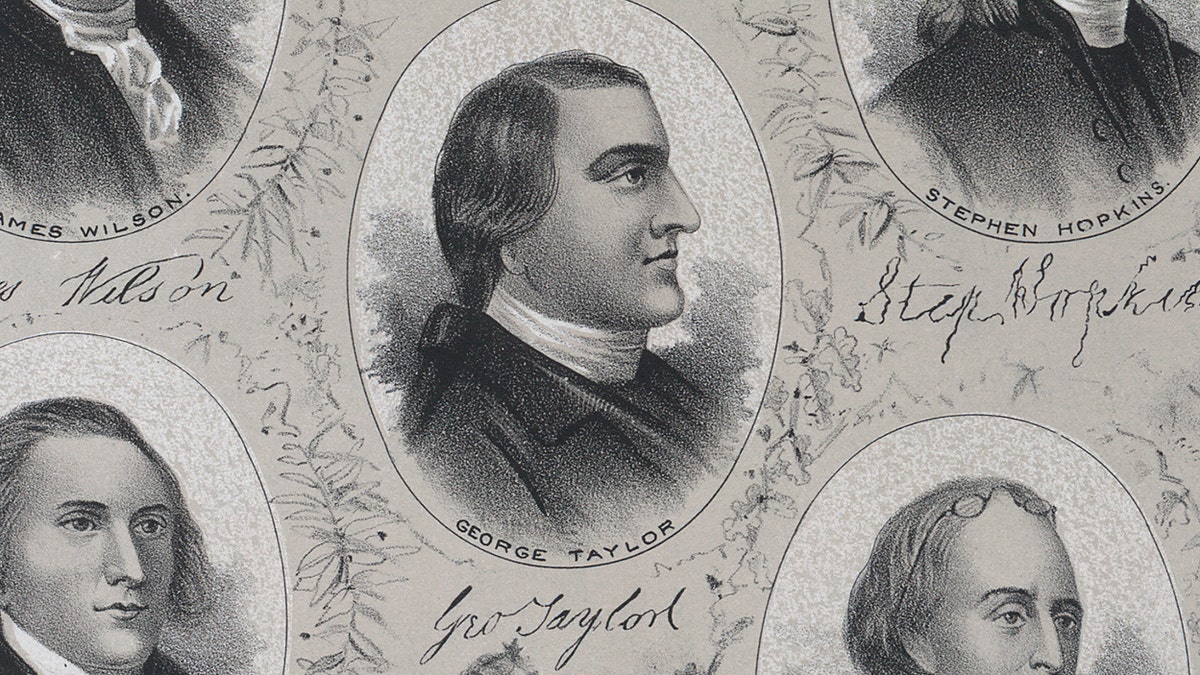
George Taylor, as he appeared in a document, circa 1876, of portraits and autographs of the signers of the Declaration of Independence. (HUM Images/Universal Images Group via Getty Images)
Taylor did not himself live up to the standards set forth in the Declaration of Independence, most notably the ideal that “all men are created equal.” He owned two slaves.
But the power of the Declaration of Independence is that it gave humanity, for the first time in its history, political standards and ideals.
“Abraham Lincoln called those words the most important in American history,” said Ellis. “He said they were not for immediate effect, but were a promise — a promise that we in future generations need to live up to.”
The Declaration of Independence “helped to inspire countless movements for independence, self-determination and revolution after 1776.”
Ireland’s impact on the Declaration of Independence ran deeper than just its three signatories, each of whom represented Pennsylvania.
Charles Thomson, the secretary of the Continental Congress, assigned among other duties to revising the final Declaration, was born in Ireland.
So, too, was printer John Dunlap, the man who put the July 4th date on the document.
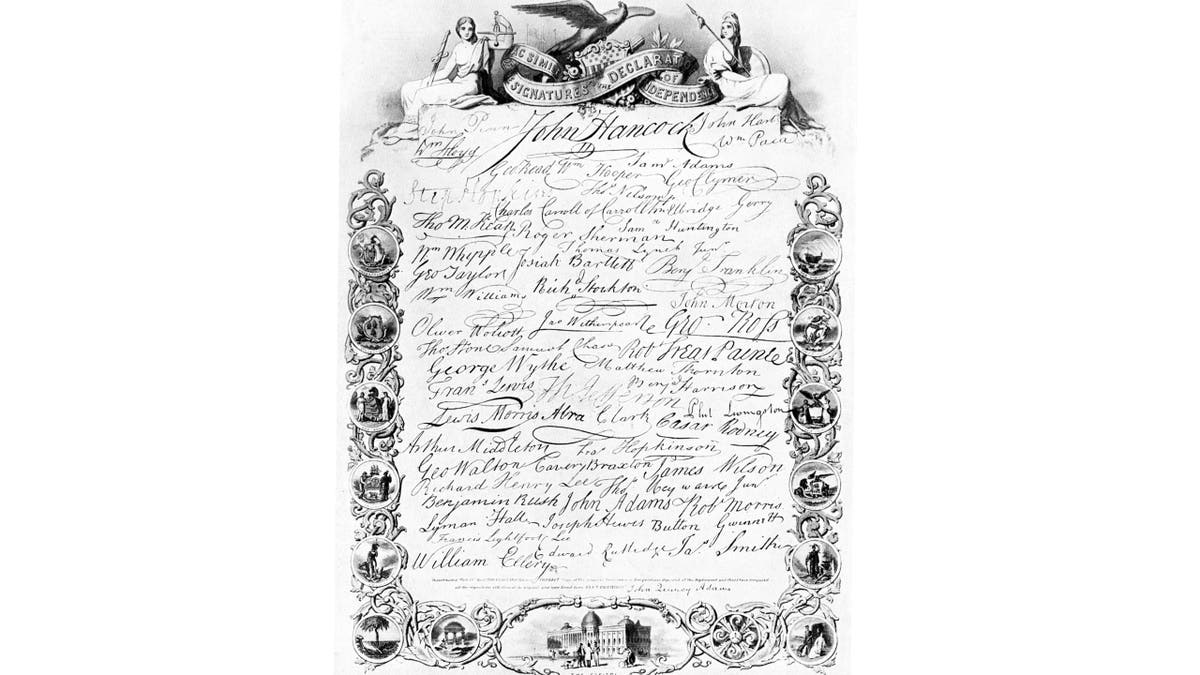
The signatures to the American Declaration of Independence. Illustration from “Story of the British Nation, Volume III,” Walter Hutchinson (London, c1920s). (The Print Collector/Print Collector/Getty Images)
They came from what’s now both Northern Ireland and the Republic of Ireland.
“The people of the United States and of Northern Ireland remain closely bound by these deep, historic ties and by the values we share,” James Applegate, Consul General for the U.S. Consulate General Belfast, said in a statement sent to Fox News Digital.
Fox News Digital requested comment from the Embassy of the Republic of Ireland in Washington, D.C.
Signers Thomas McKean, George Reed and Edward Rutledge were the children of Irish immigrants. Lt. Col. John Nixon, the first man to read the Declaration of Independence in public in Philadelphia on July 8, was also the son of an Irish immigrant.
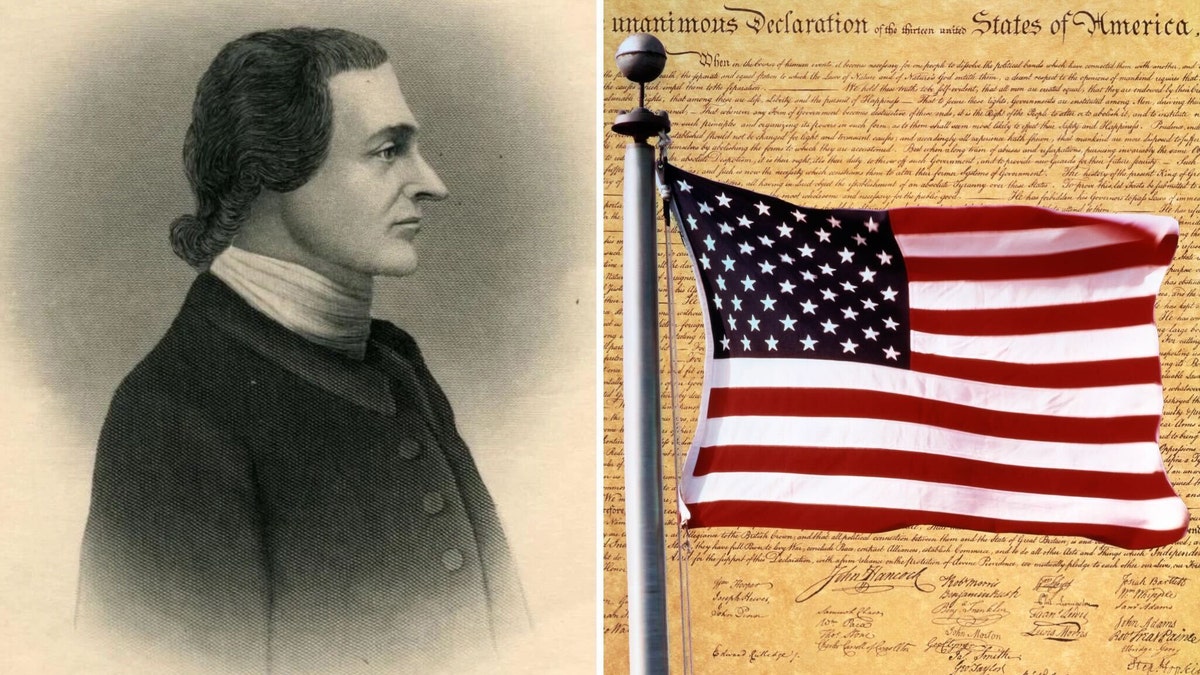
George Taylor was born in Ireland, arrived in America as an indentured servant and signed the Declaration of Independence, with U.S. flag and Declaration composite. (Hulton Archive and H. Armstrong Roberts/ClassicStock both via Getty Images)
The statement of purpose and revolt was “the first successful declaration of independence in world history,” historian and author David Armitage wrote for the Gilder Lehrman Institute of American History.
“Its example helped to inspire countless movements for independence, self-determination, and revolution after 1776.”
Ireland in 1776 had already lived under British subjugation for 500 years.
George Taylor and the Irish in America “carried in their hearts and souls and memories a history of the kind of horrid treatment that their country and their countrymen and their ancestors had received from the Brits,” said author and historian Ellis.
“They didn’t need to be convinced at all to support American Independence.”
To read more stories in this unique “Meet the American Who…” series from Fox News Digital, click here.
For more Lifestyle articles, visit www.foxnews.com/lifestyle.
Read the full article from Here

Pittsburg, PA
Could Pittsburgh get a WNBA team? The Sports and Exhibition Authority is looking into it.

PITTSBURGH (KDKA) — The fact that Pittsburgh has a shot at getting a WNBA team in the future is getting a lot of reaction around the city.
The Sports and Exhibition Authority is still bouncing the idea around and just approved another step in its game plan.
KDKA-TV hit the streets to ask people if they want to see a WNBA team in Pittsburgh.
“Absolutely, I think the women’s NBA is on a rise. I know this last class happened to be exciting, and not to take anything away from the other players but to have another WNBA team here that’d be fabulous,” said Nick Pasciullo.
“Oh definitely, bring some revenue and some excitement,” said Andrew Tucker.
“Oh yeah, I think it would be great if Pittsburgh added a team because it was just making bigger horizons. And it would be great for women’s basketball,” said Julia Loughman.
“We do need a basketball team, and I think a women’s team would be great,” another woman told KDKA-TV.
The Sports and Exhibition Authority approved up to $40,000 to have a consulting firm look into the idea. The firm will conduct a financial feasibility analysis for securing a WNBA expansion team.
The consulting firm will be completing phase 2 of the study. The firm already evaluated the fan base here. Now, it will look at the cost of operating a team in the city and potential revenues. The findings will be presented to potential owners and the WNBA.
With many eyes on rookie all-stars Caitlin Clark and Angel Reese, interest in women’s hoops has been soaring.
“They be hooping, man. They be taking it to the rim. They be doing the damn thing all the time, so WNBA would be good coming here,” Tucker said.
But would it still be a great play if a Pittsburgh team didn’t have a superstar player?
“I feel like not as many people would go. But if it became popular enough, people would come,” Loughman said.
“Doesn’t matter because we get the visiting teams,” Pasciullo said.
While most people said they think it could be a slam dunk for the Steel City, KDKA-TV asked how many games they would attend.
“I’d be a season ticket holder,” Pasciullo said.
“I would probably go once or twice each season with my dad and my family,” Loughman said.
“I’d go at least go once a week,” Tucker said.
“To be honest, I just watch it on TV,” said Louis Edmonds.
“I think It would be exciting and I would support it. I would go as much as I could,” Micah Paris said.
Connecticut
Boar's Head May Be Tough to Find Around Connecticut Tonight

You might want to ‘Compromise Elsewhere’, Boar’s Head deli meat fans. Numerous grocery store chains are temporarily shutting down their deli departments for a deep-cleaning following a reported multi-state outbreak of listeria.
Big Y has announced that their deli’s will be temporarily closed after Boar’s Head Provisions Co recalled all of their liverwurst product. Boar’s Head has also more of their deli meats that may have been produced on the same production line. According to Big Y, the USDA has recommended a deep-cleaning/sanitization of all surfaces, and to discard any open meats and cheeses in the deli. The other Boar’s Head meats that have been recalled are:
- Virginia Ham – Old Fashioned Ham
- Italian Cappy Style Ham
- Extra Hot Italian Cappy Style Ham
- Bologna
- Beef Salami
- Steakhouse Roasted Bacon Heat & Eat
- Garlic Bologna
- Beef Bologna
All of the Boar’s Head deli meats have sell-by dates of “AUG 10”, and the Heat & Eat Bacon has a sell-by date of “AUG 15”.
Big Y did not offer Boar’s Head deli meats in their Connecticut markets for the longest time, I recall that it’s only been a year or two that I’ve been able to buy my favorite – Boar’s head low-sodium ham, at the Big Y – Torrington and New Milford locations.
Stop & Shop supermarkets around Connecticut will also temporarily close their deli’s for a deep cleaning according to nbcconnecticut.com. The good news is that if your local deli does not carry Boar’s Head deli meat, there should be a pile of clean, shaved beef waiting for you.
What Would the Olympics Be Like If They Were Held in Connecticut?
The 2024 Paris Olympics are underway, and while watching the opening ceremonies, I started imagining what kind of games, celebrities, and venues our state would present as our finest. What would an Olympics look like if the games were held in Connecticut?
Gallery Credit: Getty Images/Google
35 Reasons Why I Love Living in Connecticut
Gallery Credit: Ethan Carey
Maine
Maine state police bomb team at a home in Penobscot County

MILFORD, Maine – The Maine’s State Police Bomb Team is at a residence on Call Road in Milford processing a scene for potential hazardous devices.
Officials say there is no danger to the public.
This is a developing story.
Copyright 2024 WABI. All rights reserved.
-

 World1 week ago
World1 week agoOne dead after car crashes into restaurant in Paris
-

 Midwest1 week ago
Midwest1 week agoMichigan rep posts video response to Stephen Colbert's joke about his RNC speech: 'Touché'
-

 News1 week ago
News1 week agoVideo: Young Republicans on Why Their Party Isn’t Reaching Gen Z (And What They Can Do About It)
-

 Movie Reviews1 week ago
Movie Reviews1 week agoMovie Review: A new generation drives into the storm in rousing ‘Twisters’
-

 News1 week ago
News1 week agoIn Milwaukee, Black Voters Struggle to Find a Home With Either Party
-

 Politics1 week ago
Politics1 week agoFox News Politics: The Call is Coming from Inside the House
-

 News1 week ago
News1 week agoVideo: J.D. Vance Accepts Vice-Presidential Nomination
-

 World1 week ago
World1 week agoTrump to take RNC stage for first speech since assassination attempt















